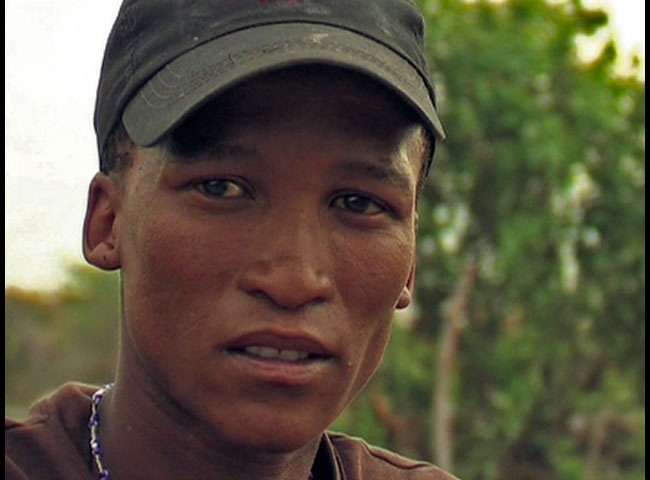Bitter Roots: The Ends of a Kalahari Myth
-
Réalisé par Adrian Strong • Écrit par Adrian Strong
-
États-Unis • 2010 • 71 minutes • Couleur
- Réalisation :
Adrian Strong - Écriture :
Adrian Strong - Image :
Adrian Strong - Son :
Adrian Strong
- Production (structure) :
DER - Documentary Educational Resources - Ayant droit :
DER - Documentary Educational Resources
- N° ISAN :
non renseigné
Résumé
Tourné en 2007, deux ans après la mort de Marshall (et incluant des extraits de ses films), Bitter Roots relate le retour de A. Strong et C. Ritchie à Nyae-Nyae où ils observent l'érosion d'un processus de développement mené par la communauté après l'instauration d'un nouvel ordre du jour par le WWF, qui donne la priorité à la conservation de la faune et de la flore et au tourisme au détriment de l'agriculture de subsistance. La communauté exprime son mécontentement face au nouveau conservatoire, qui aide si peu le peuple à cultiver et à améliorer la vie des habitants.
A travers des séquences d’archives et des discussions avec des membres de la communauté, ce film s’intéresse avec sensibilité aux problèmes (lions, éléphants, défenseurs de l'environnement) auxquels sont confrontés les Ju'hoansi et défie le mythe que, culturellement, ils sont incapables de devenir cultivateurs.
Le film examine la perpétuation de ce mythe en montrant comment les touristes et des cinéastes exigent toujours de voir comment les gens vivaient autrefois plutôt que la façon dont ils vivent aujourd’hui, et comment les Ju'hoansi font face à ces attentes, en continuant résolument à cultiver envers et contre tout.
Bitter Roots: The Ends of a Kalahari Myth is set in Nyae-Nyae, a region of Namibia located in southern Africa's Kalahari desert, traditional home of the Ju/'hoansi. It updates the ethnographic film record begun in the 1950s by John Marshall, whose films documented 50 years of change, and who together with Claire Ritchie, established a grass-roots development foundation, which Adrian Strong (the filmmaker) joined in the late 1980s.
Shot in 2007, two years after Marshall's death (and including footage from his films), Bitter Roots documents the return of Strong and Ritchie to Nyae-Nyae where they observe the erosion of a community-led development process following the imposition of a new agenda led by the World Wildlife Fund, which prioritizes wildlife conservation and tourism over subsistence farming. Communities voice their dissatisfaction with the new Conservancy, which has done little to help people farm and improve their lives.
Through archival footage and discussions with community members, this film sensitively examines the problems (lions, elephants, conservationists) currently facing the Ju/'hoansi and challenges the myth that they are culturally unable to farm. The film investigates the perpetuation of this myth by showing how tourists and filmmakers still demand to see how people used to live rather than they way they live now, and how the Ju/'hoansi cope with such expectations, while steadfastly continuing to farm against all the odds.
Mot(s)-clé(s) thématique(s)
Sélections et distinctions
- 2012 • World Film festival • Tartu (Estonie) • Sélection
- 2012 • The Archaeology Channel - International Film and Video Festival • Eugène (États-Unis) • Prix du Public & Mention d'Honn
- 2012 • Göttingen International Ethnographic Film Festival • Göttingen (Allemagne) • Sélection
- 2011 • RAI International Festival of Ethnographic Film • Londres (Royaume-Uni) • Sélection
- 2011 • The Nordic Anthropological Film Association (NAFA) • Isafjordur (Finlande) • Sélection
Comment avoir accès au film ?
-
Édition DVD
- Il n'existe pas d'édition DVD à notre connaissance
-
Accès VOD
- Il n'existe pas d'accès en VOD à notre connaissance
- Distribution
- Aide sur les moyens d'accéder à un film
